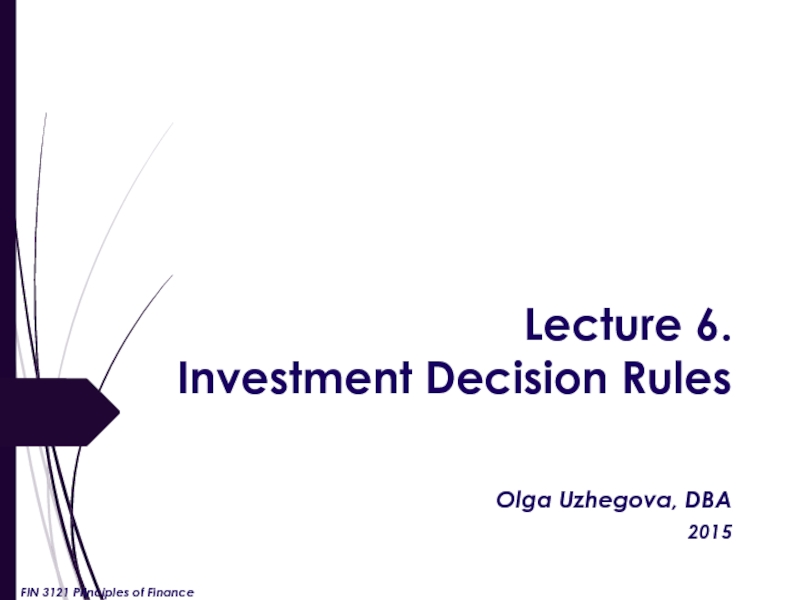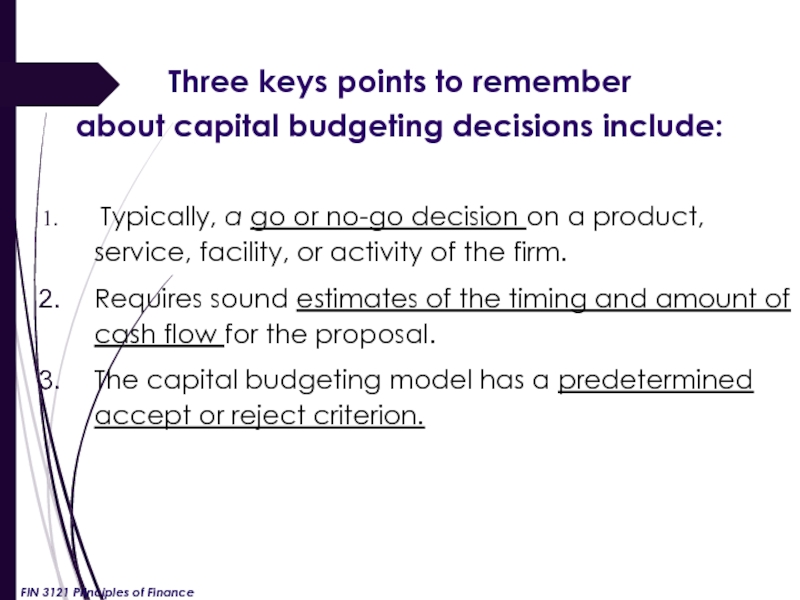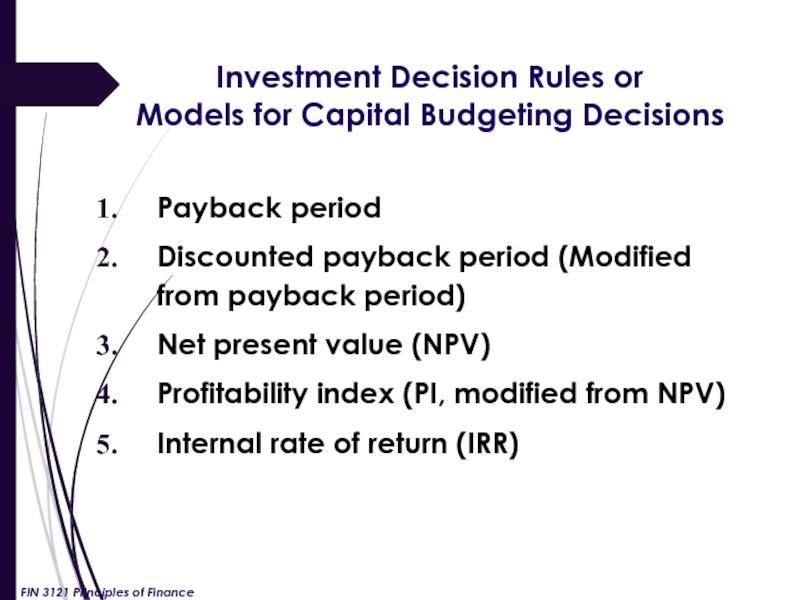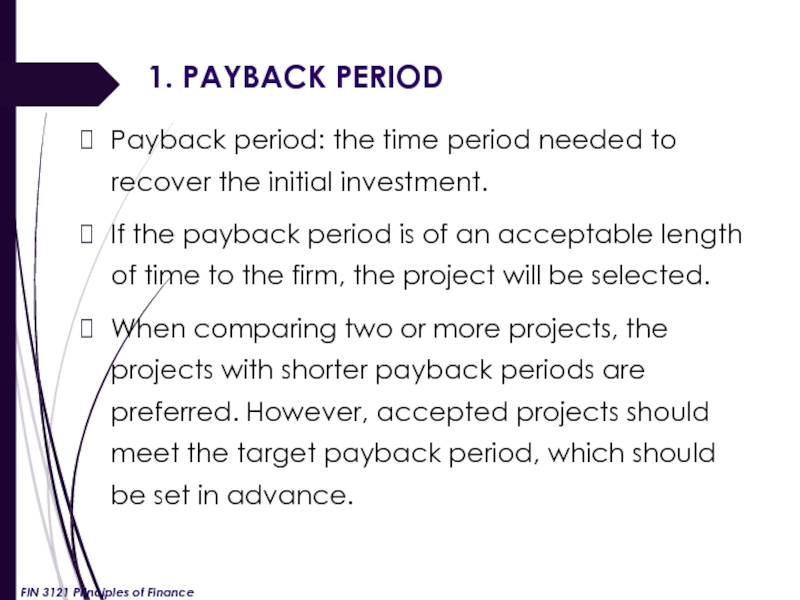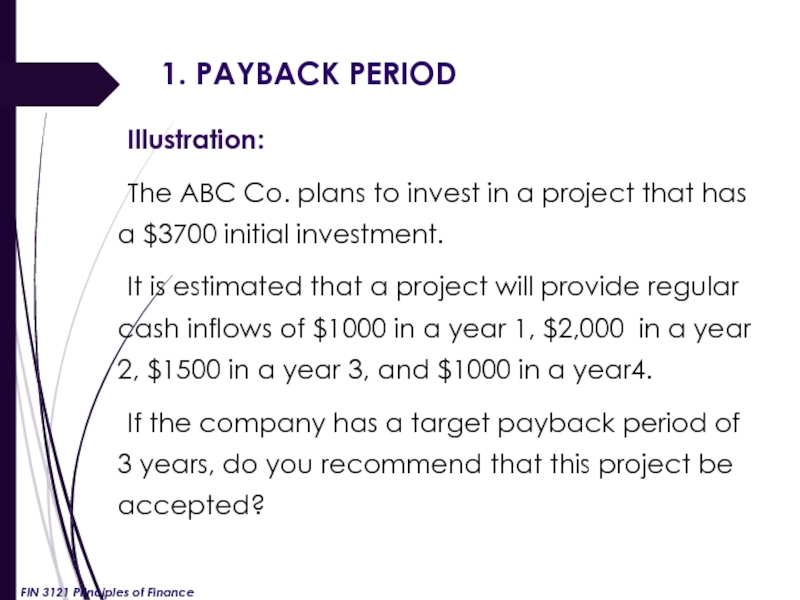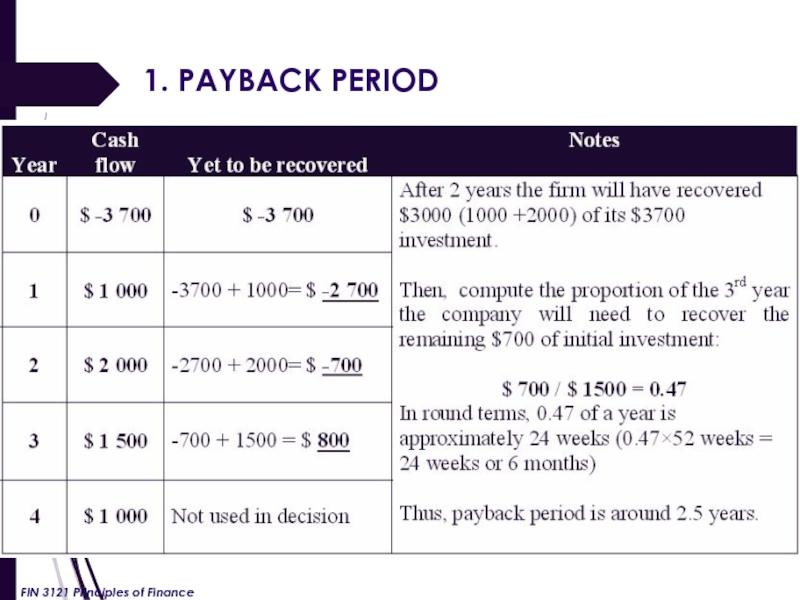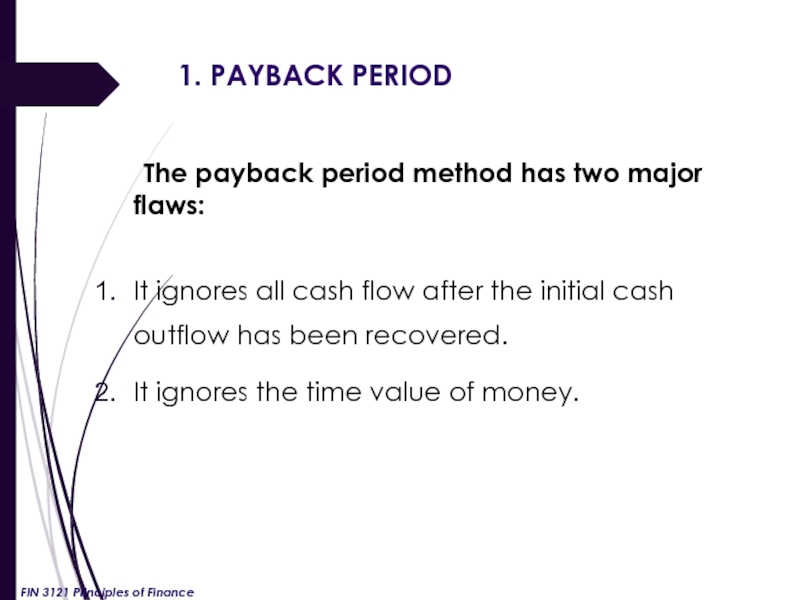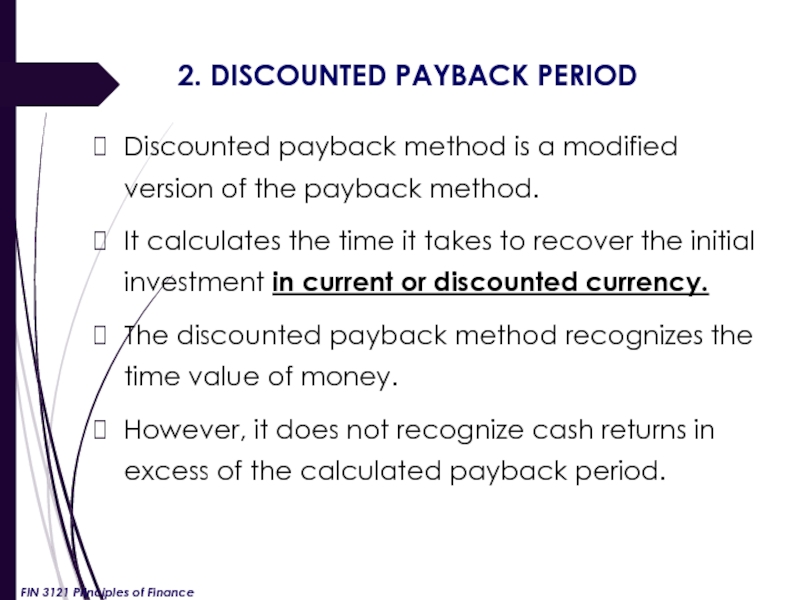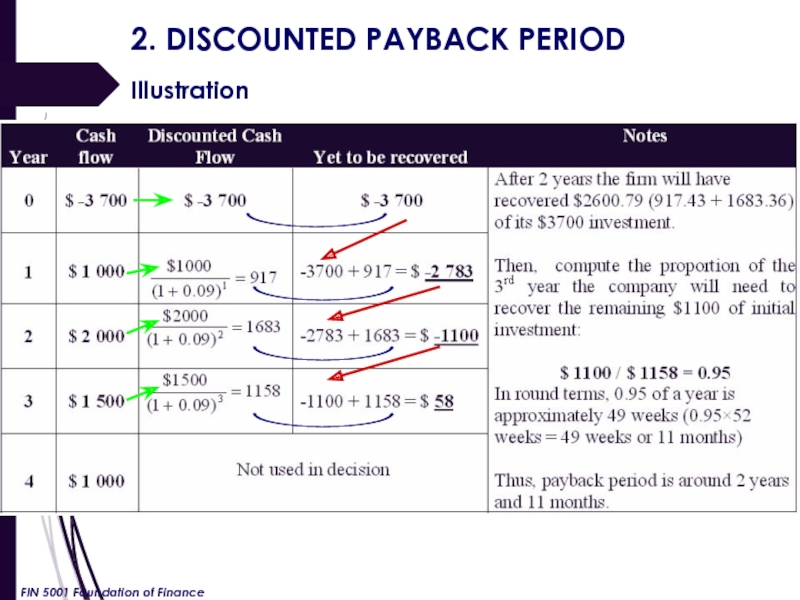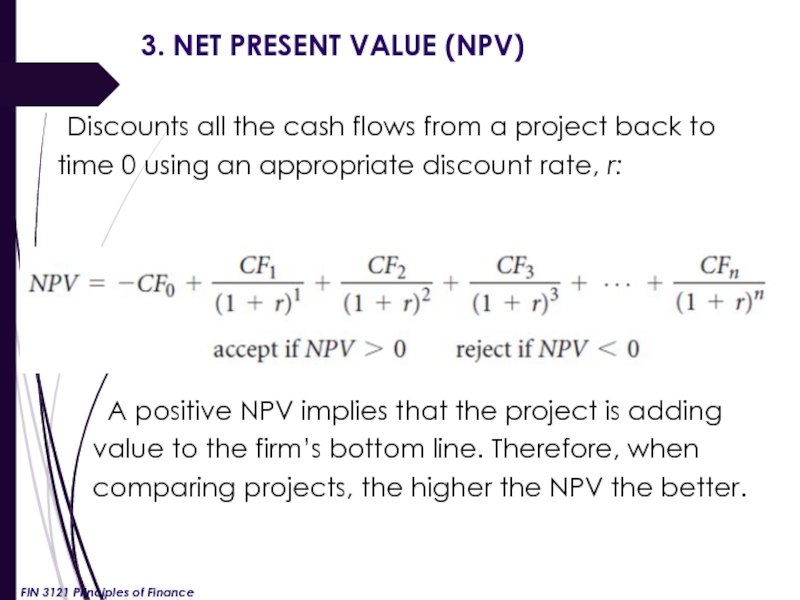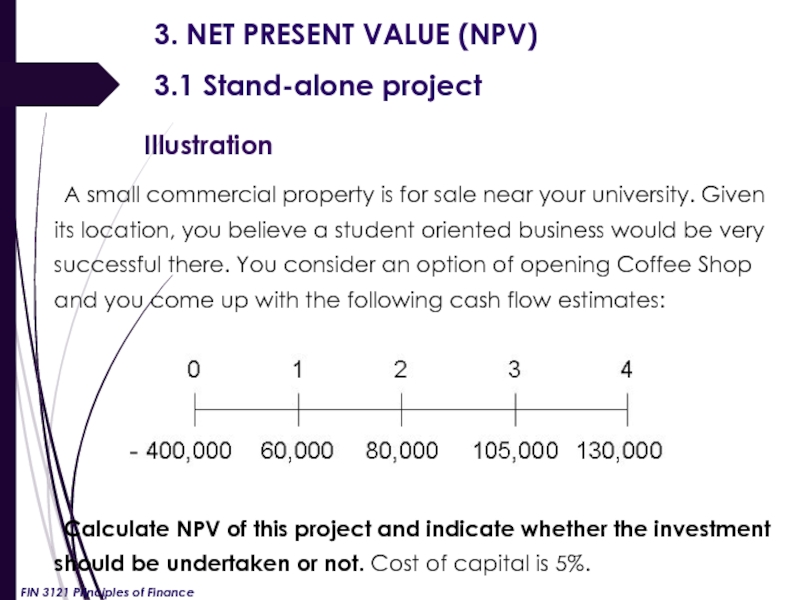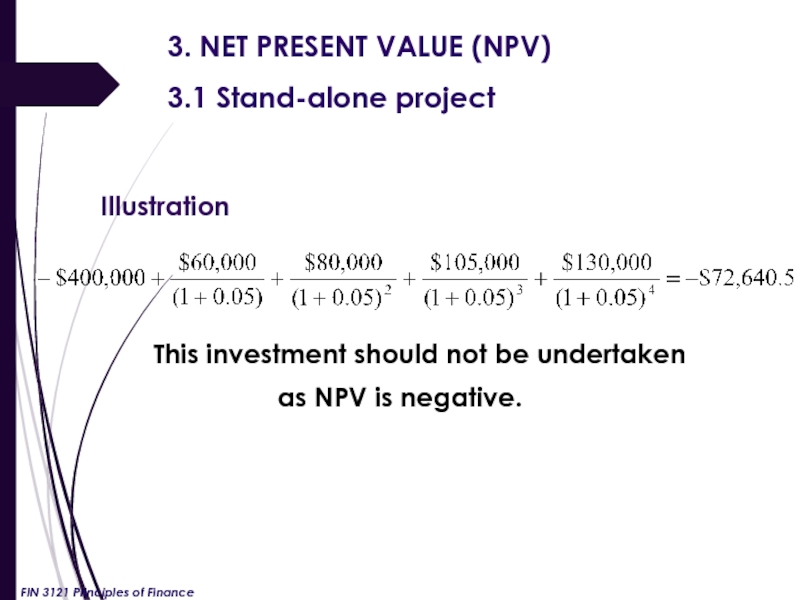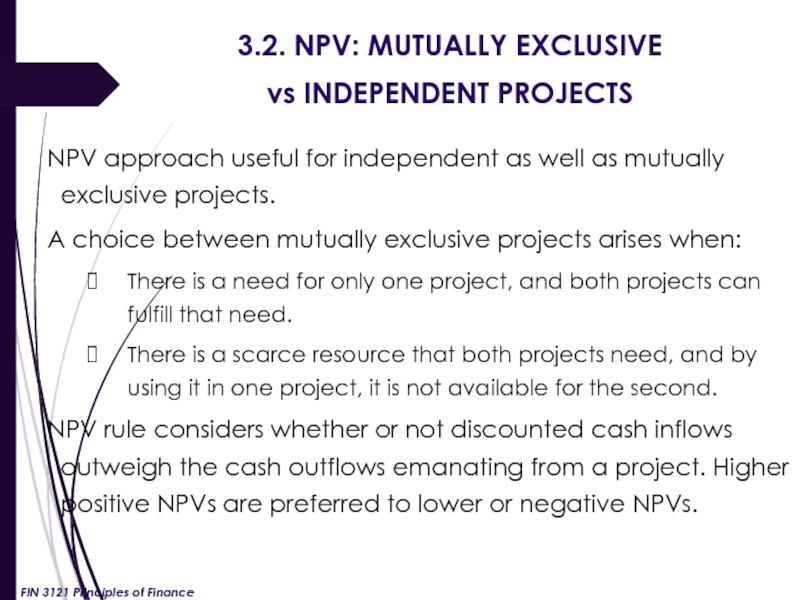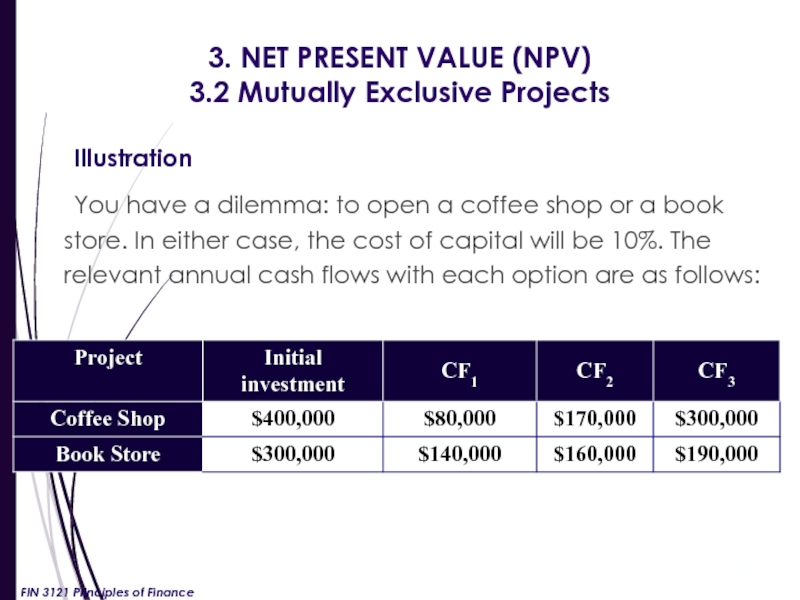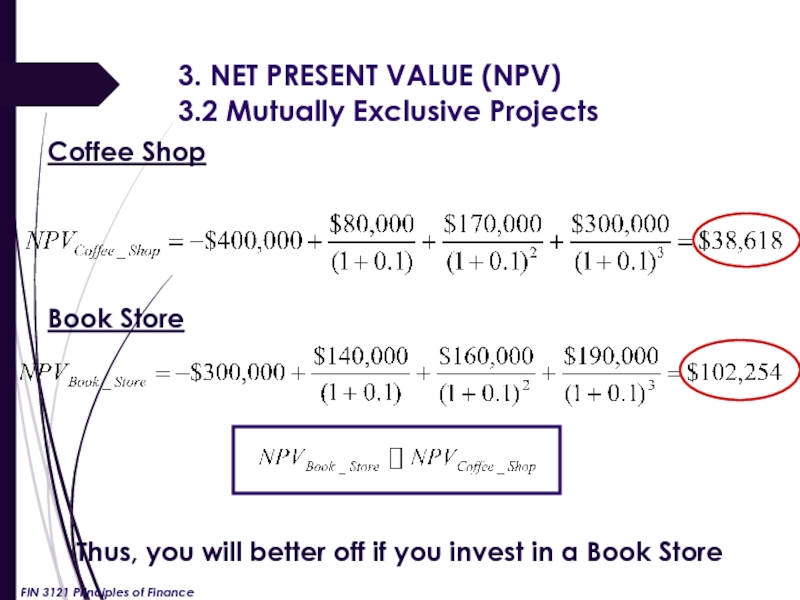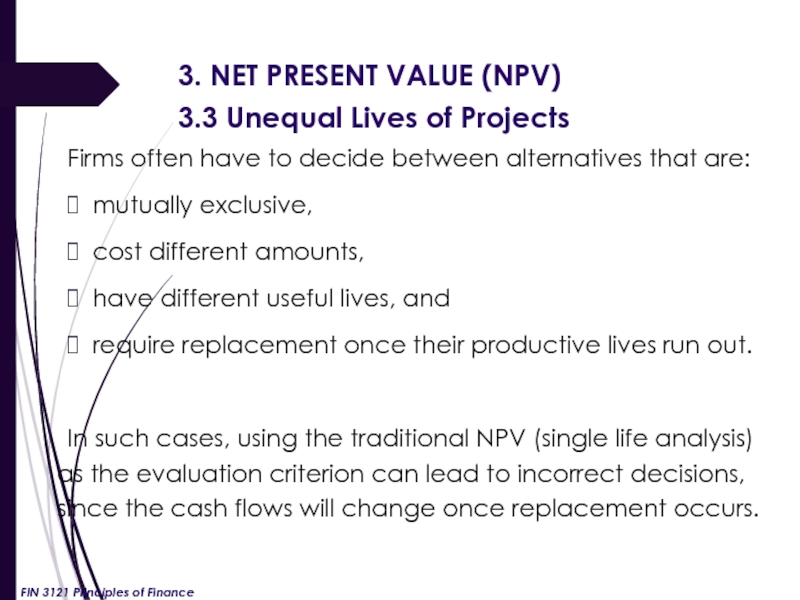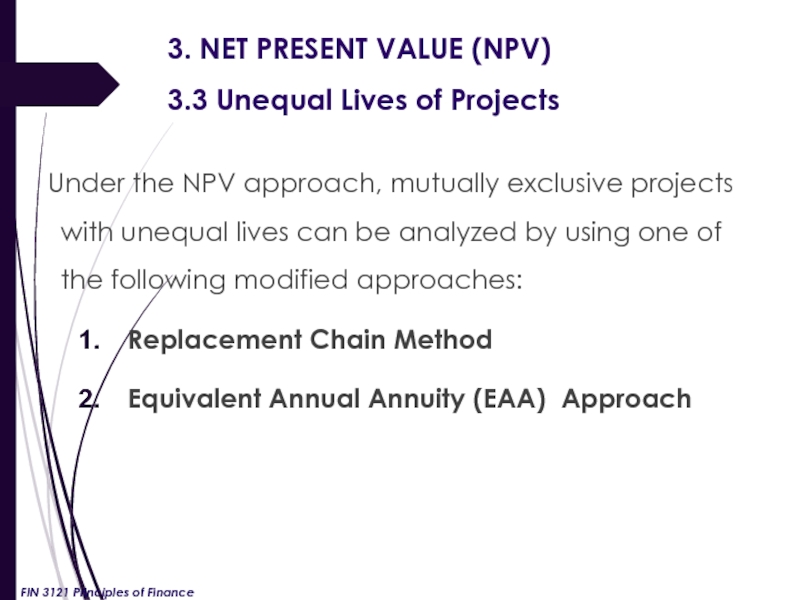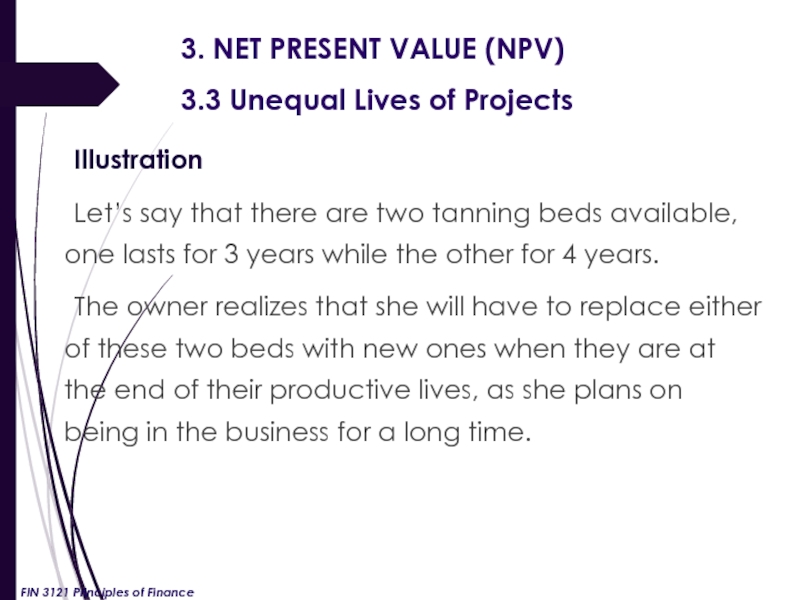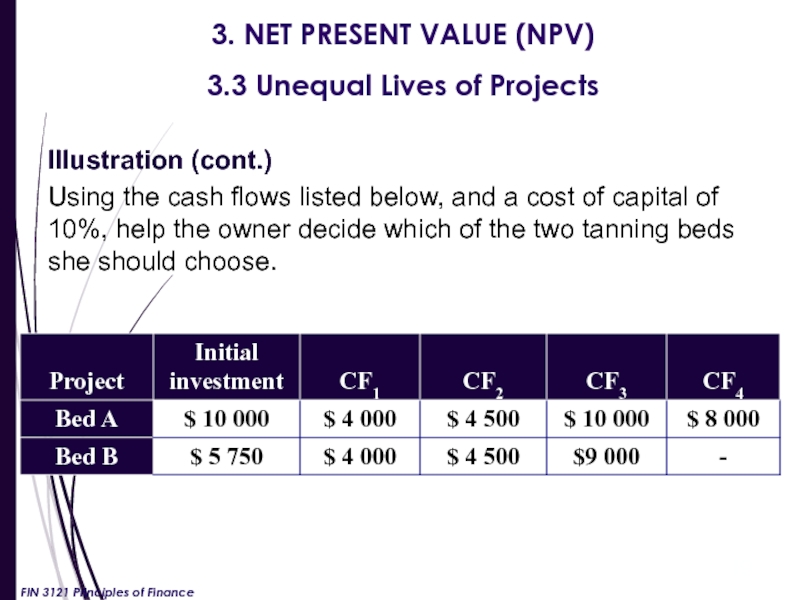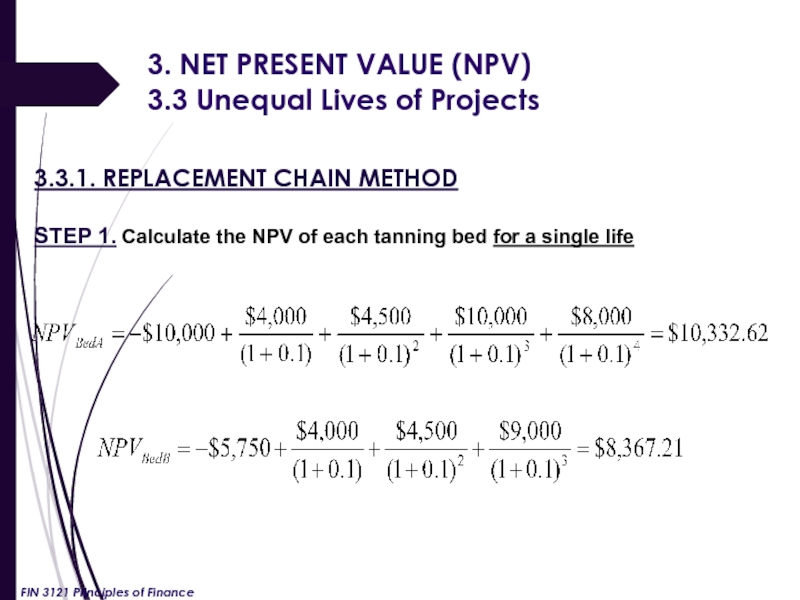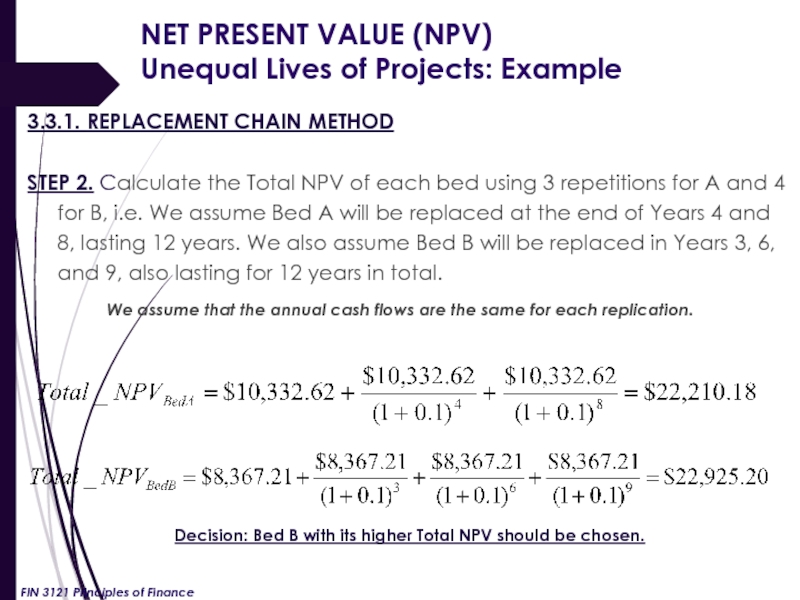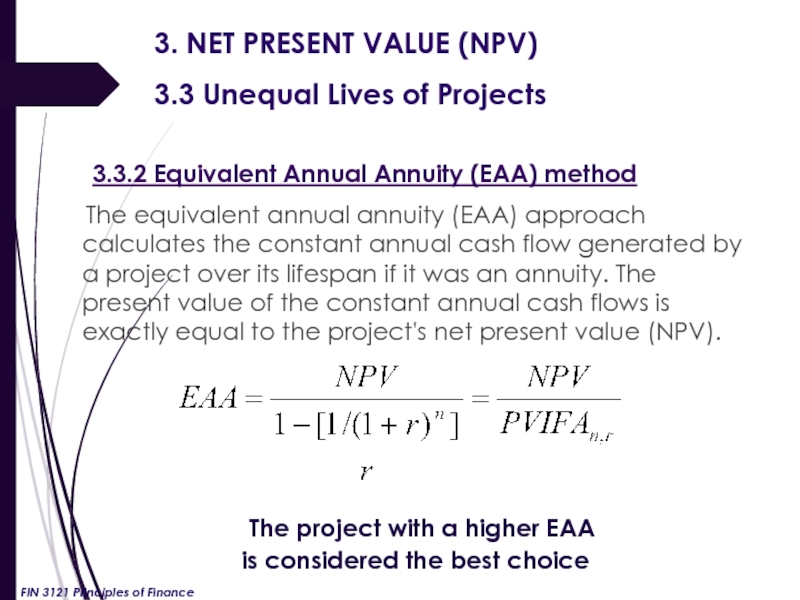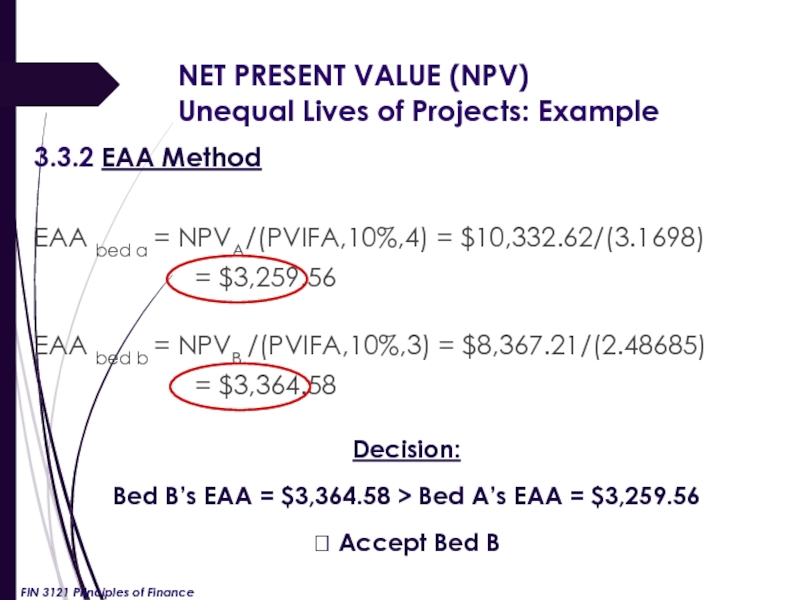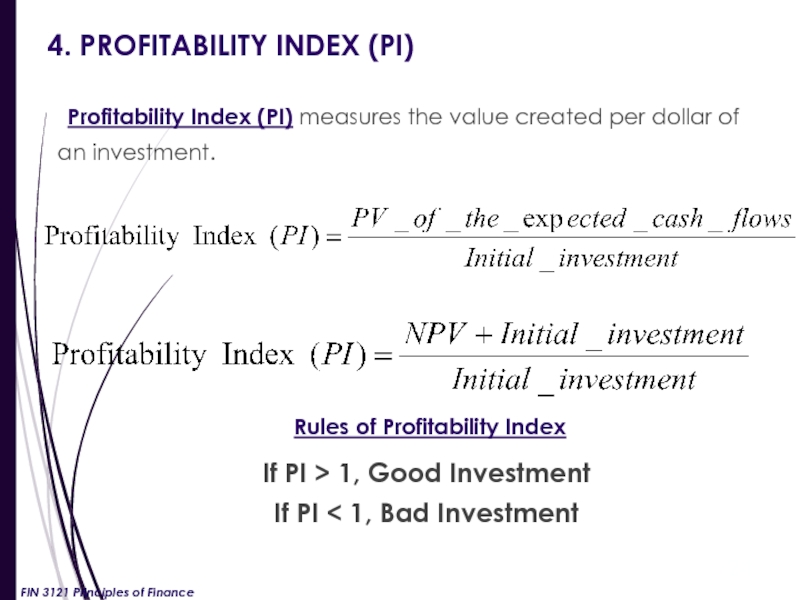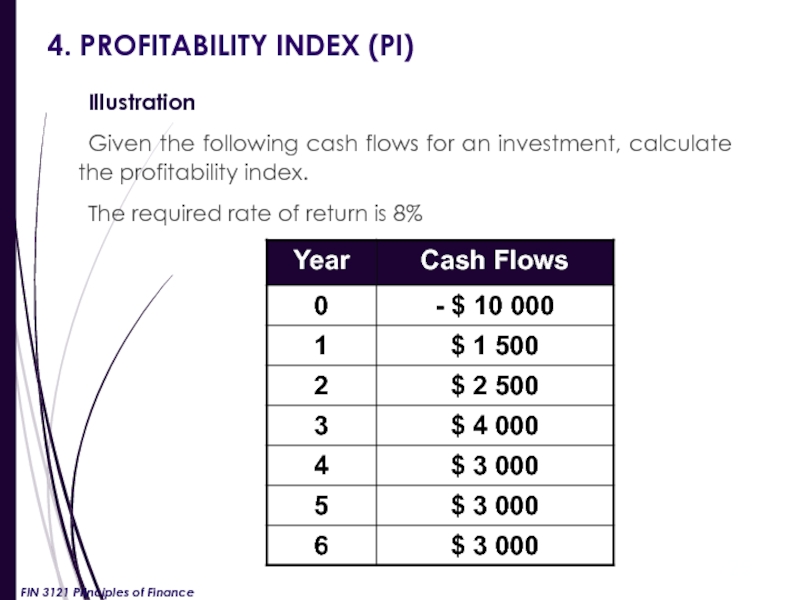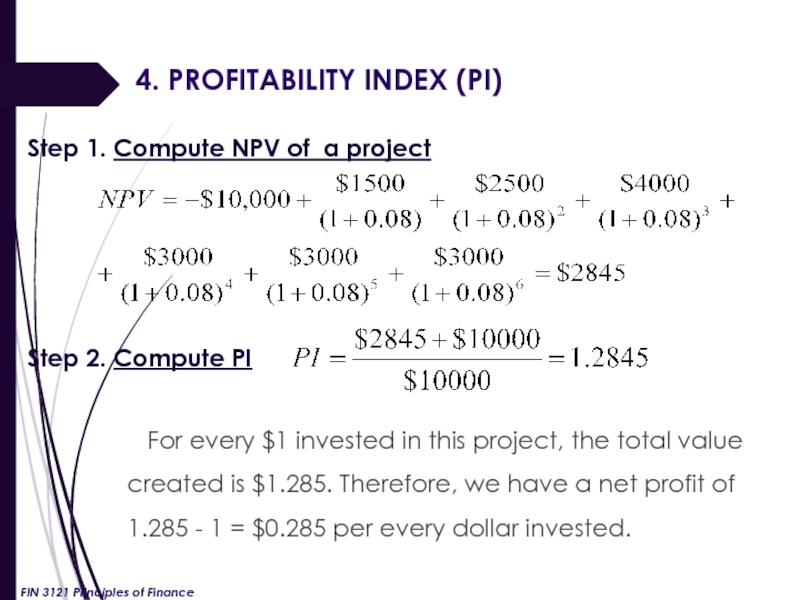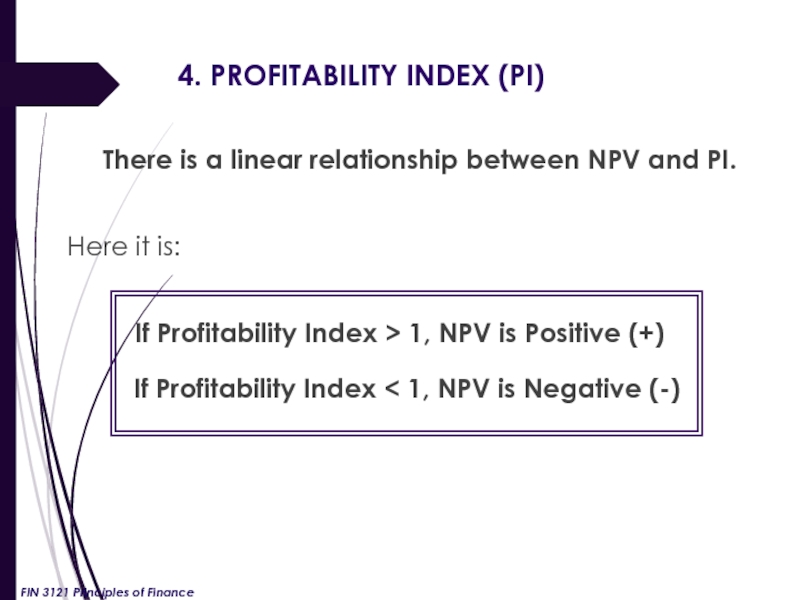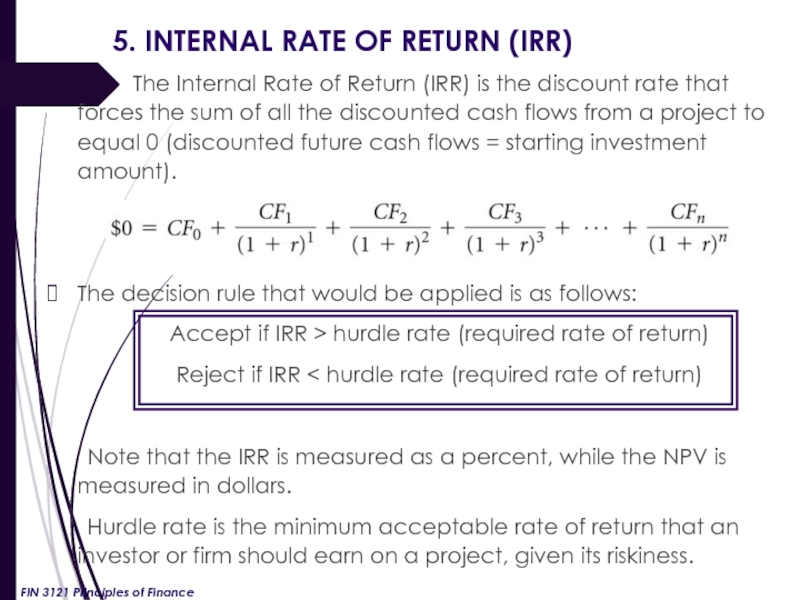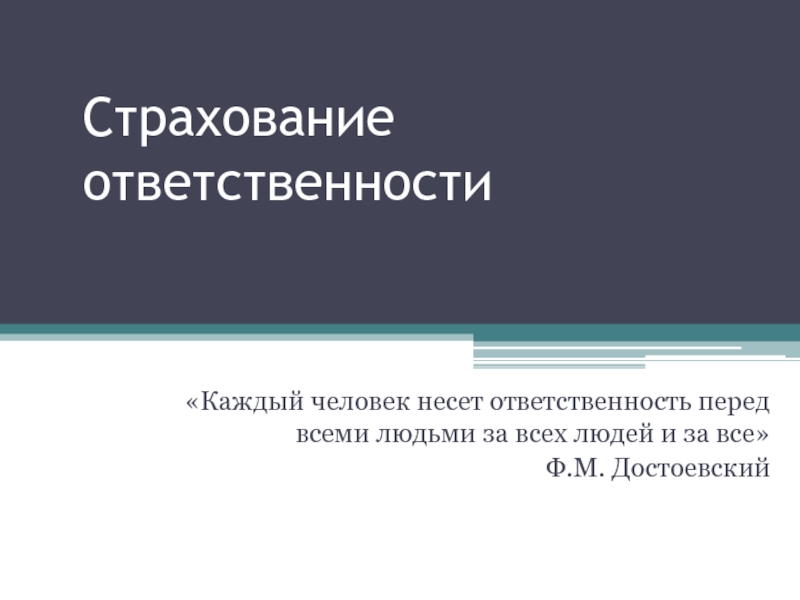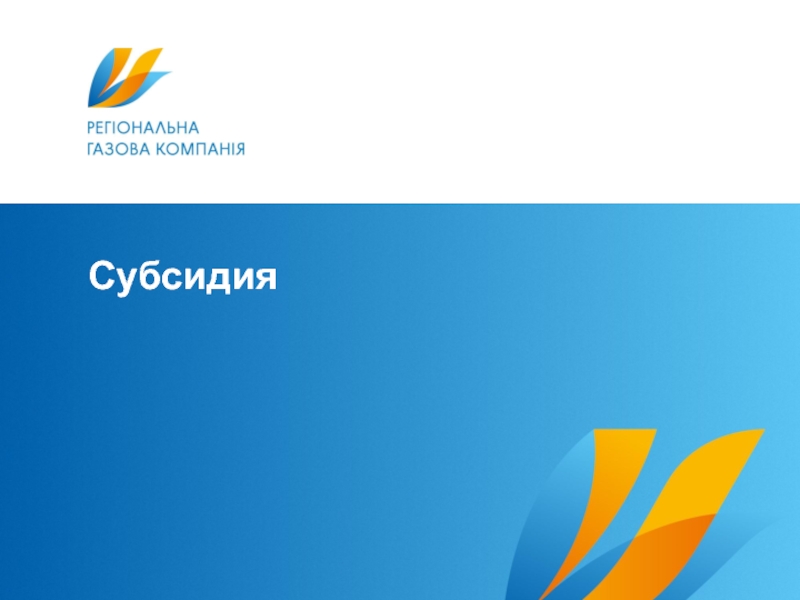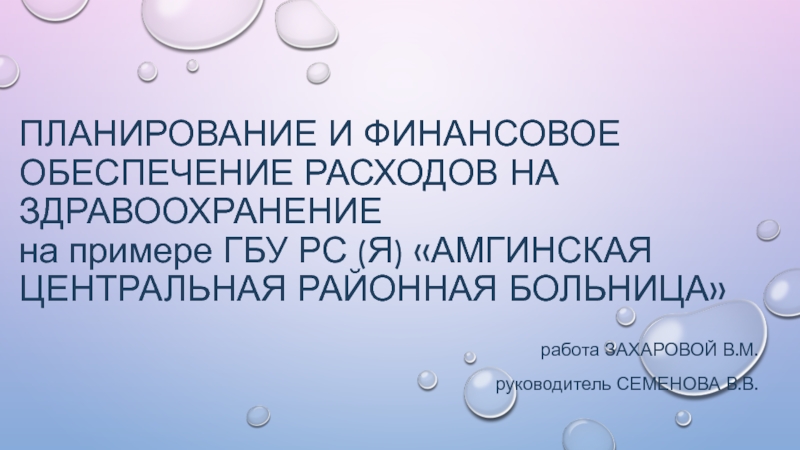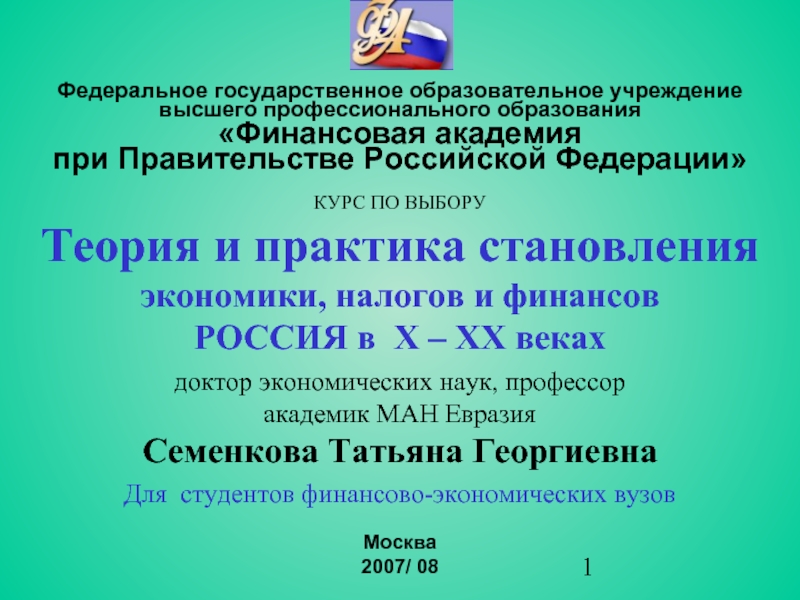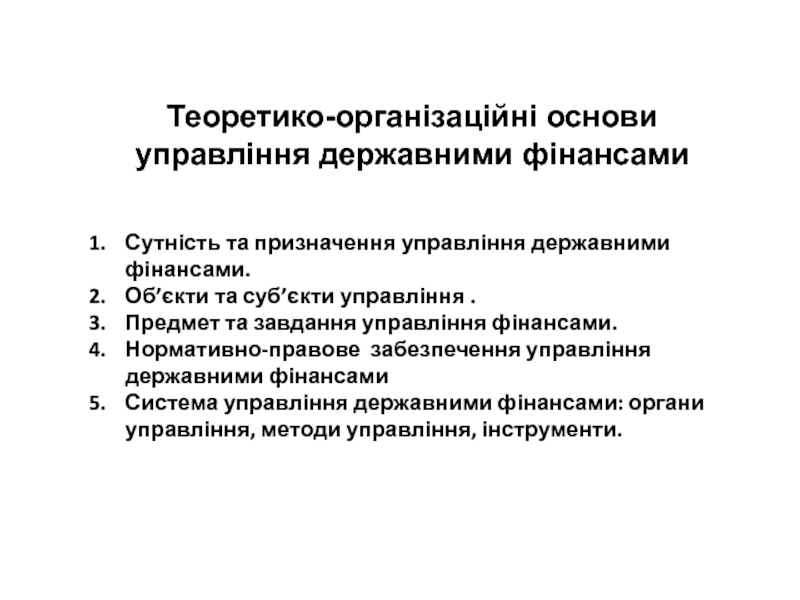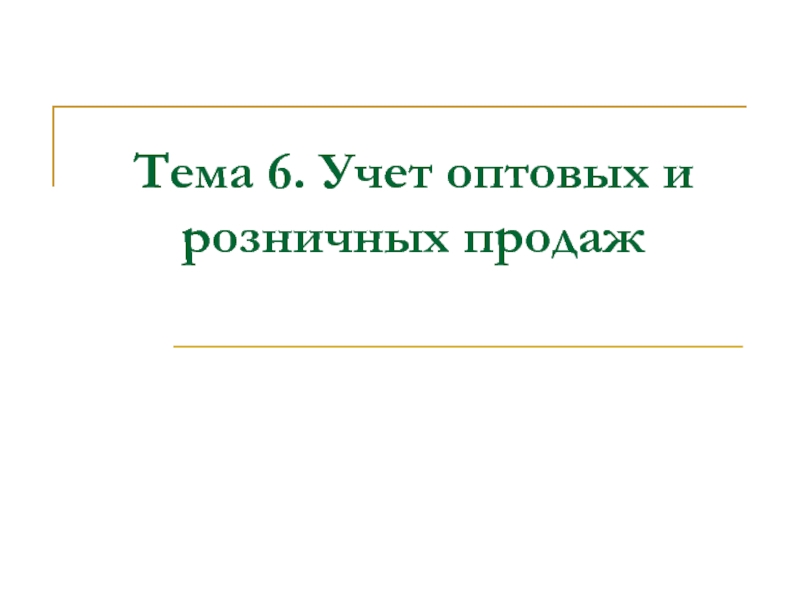- Главная
- Разное
- Дизайн
- Бизнес и предпринимательство
- Аналитика
- Образование
- Развлечения
- Красота и здоровье
- Финансы
- Государство
- Путешествия
- Спорт
- Недвижимость
- Армия
- Графика
- Культурология
- Еда и кулинария
- Лингвистика
- Английский язык
- Астрономия
- Алгебра
- Биология
- География
- Детские презентации
- Информатика
- История
- Литература
- Маркетинг
- Математика
- Медицина
- Менеджмент
- Музыка
- МХК
- Немецкий язык
- ОБЖ
- Обществознание
- Окружающий мир
- Педагогика
- Русский язык
- Технология
- Физика
- Философия
- Химия
- Шаблоны, картинки для презентаций
- Экология
- Экономика
- Юриспруденция
Investment decision. Rules. (Lecture 6) презентация
Содержание
- 1. Investment decision. Rules. (Lecture 6)
- 2. Three keys points to remember
- 3. Investment Decision Rules or Models for
- 4. 1. PAYBACK PERIOD Payback period: the time
- 5. 1. PAYBACK PERIOD Illustration: The ABC
- 6. 1. PAYBACK PERIOD FIN 3121 Principles of Finance
- 7. 1. PAYBACK PERIOD The payback period method
- 8. 2. DISCOUNTED PAYBACK PERIOD Discounted payback method
- 9. 2. DISCOUNTED PAYBACK PERIOD Illustration
- 10. 3. NET PRESENT VALUE (NPV) Discounts all
- 11. 3. NET PRESENT VALUE (NPV) 3.1 Stand-alone
- 12. 3. NET PRESENT VALUE (NPV) 3.1 Stand-alone
- 13. 3.2. NPV: MUTUALLY EXCLUSIVE vs INDEPENDENT
- 14. 3. NET PRESENT VALUE (NPV) 3.2
- 15. 3. NET PRESENT VALUE (NPV) 3.2
- 16. 3. NET PRESENT VALUE (NPV) 3.3
- 17. 3. NET PRESENT VALUE (NPV) 3.3
- 18. 3. NET PRESENT VALUE (NPV) 3.3
- 19. 3. NET PRESENT VALUE (NPV) 3.3
- 20. 3. NET PRESENT VALUE (NPV) 3.3
- 21. NET PRESENT VALUE (NPV) Unequal Lives
- 22. 3. NET PRESENT VALUE (NPV) 3.3
- 23. NET PRESENT VALUE (NPV) Unequal Lives
- 24. 4. PROFITABILITY INDEX (PI) Profitability Index (PI)
- 25. 4. PROFITABILITY INDEX (PI) Illustration Given the
- 26. 4. PROFITABILITY INDEX (PI) Step 1.
- 27. 4. PROFITABILITY INDEX (PI) There is a
- 28. 5. INTERNAL RATE OF RETURN (IRR)
- 29. THE END FIN 3121 Principles of Finance
Слайд 2
Three keys points to remember
about capital budgeting decisions include:
Typically, a
Requires sound estimates of the timing and amount of cash flow for the proposal.
The capital budgeting model has a predetermined accept or reject criterion.
FIN 3121 Principles of Finance
Слайд 3Investment Decision Rules or
Models for Capital Budgeting Decisions
Payback period
Discounted payback
Net present value (NPV)
Profitability index (PI, modified from NPV)
Internal rate of return (IRR)
FIN 3121 Principles of Finance
Слайд 41. PAYBACK PERIOD
Payback period: the time period needed to recover the
If the payback period is of an acceptable length of time to the firm, the project will be selected.
When comparing two or more projects, the projects with shorter payback periods are preferred. However, accepted projects should meet the target payback period, which should be set in advance.
FIN 3121 Principles of Finance
Слайд 51. PAYBACK PERIOD
Illustration:
The ABC Co. plans to invest in a
It is estimated that a project will provide regular cash inflows of $1000 in a year 1, $2,000 in a year 2, $1500 in a year 3, and $1000 in a year4.
If the company has a target payback period of 3 years, do you recommend that this project be accepted?
FIN 3121 Principles of Finance
Слайд 71. PAYBACK PERIOD
The payback period method has two major flaws:
It ignores
It ignores the time value of money.
FIN 3121 Principles of Finance
Слайд 82. DISCOUNTED PAYBACK PERIOD
Discounted payback method is a modified version of
It calculates the time it takes to recover the initial investment in current or discounted currency.
The discounted payback method recognizes the time value of money.
However, it does not recognize cash returns in excess of the calculated payback period.
FIN 3121 Principles of Finance
Слайд 103. NET PRESENT VALUE (NPV)
Discounts all the cash flows from a
A positive NPV implies that the project is adding value to the firm’s bottom line. Therefore, when comparing projects, the higher the NPV the better.
FIN 3121 Principles of Finance
Слайд 113. NET PRESENT VALUE (NPV)
3.1 Stand-alone project
A small commercial property is for sale near your university. Given its location, you believe a student oriented business would be very successful there. You consider an option of opening Coffee Shop and you come up with the following cash flow estimates:
Calculate NPV of this project and indicate whether the investment should be undertaken or not. Cost of capital is 5%.
FIN 3121 Principles of Finance
Слайд 123. NET PRESENT VALUE (NPV)
3.1 Stand-alone project
Illustration
This investment should not be
as NPV is negative.
FIN 3121 Principles of Finance
Слайд 133.2. NPV: MUTUALLY EXCLUSIVE
vs INDEPENDENT PROJECTS
NPV approach useful for independent
A choice between mutually exclusive projects arises when:
There is a need for only one project, and both projects can fulfill that need.
There is a scarce resource that both projects need, and by using it in one project, it is not available for the second.
NPV rule considers whether or not discounted cash inflows outweigh the cash outflows emanating from a project. Higher positive NPVs are preferred to lower or negative NPVs.
FIN 3121 Principles of Finance
Слайд 143. NET PRESENT VALUE (NPV)
3.2 Mutually Exclusive Projects
Illustration
You have
FIN 3121 Principles of Finance
Слайд 153. NET PRESENT VALUE (NPV)
3.2 Mutually Exclusive Projects
Coffee Shop
Book Store
Thus,
FIN 3121 Principles of Finance
Слайд 163. NET PRESENT VALUE (NPV)
3.3 Unequal Lives of Projects
Firms often
mutually exclusive,
cost different amounts,
have different useful lives, and
require replacement once their productive lives run out.
In such cases, using the traditional NPV (single life analysis) as the evaluation criterion can lead to incorrect decisions, since the cash flows will change once replacement occurs.
FIN 3121 Principles of Finance
Слайд 173. NET PRESENT VALUE (NPV)
3.3 Unequal Lives of Projects
Under the
Replacement Chain Method
Equivalent Annual Annuity (EAA) Approach
FIN 3121 Principles of Finance
Слайд 183. NET PRESENT VALUE (NPV)
3.3 Unequal Lives of Projects
Illustration
Let’s
The owner realizes that she will have to replace either of these two beds with new ones when they are at the end of their productive lives, as she plans on being in the business for a long time.
FIN 3121 Principles of Finance
Слайд 193. NET PRESENT VALUE (NPV)
3.3 Unequal Lives of Projects
Illustration (cont.)
Using
FIN 3121 Principles of Finance
Слайд 203. NET PRESENT VALUE (NPV)
3.3 Unequal Lives of Projects
3.3.1. REPLACEMENT
STEP 1. Calculate the NPV of each tanning bed for a single life
FIN 3121 Principles of Finance
Слайд 21NET PRESENT VALUE (NPV)
Unequal Lives of Projects: Example
3.3.1. REPLACEMENT CHAIN
STEP 2. Calculate the Total NPV of each bed using 3 repetitions for A and 4 for B, i.e. We assume Bed A will be replaced at the end of Years 4 and 8, lasting 12 years. We also assume Bed B will be replaced in Years 3, 6, and 9, also lasting for 12 years in total.
We assume that the annual cash flows are the same for each replication.
Decision: Bed B with its higher Total NPV should be chosen.
FIN 3121 Principles of Finance
Слайд 223. NET PRESENT VALUE (NPV)
3.3 Unequal Lives of Projects
3.3.2 Equivalent
The equivalent annual annuity (EAA) approach calculates the constant annual cash flow generated by a project over its lifespan if it was an annuity. The present value of the constant annual cash flows is exactly equal to the project's net present value (NPV).
The project with a higher EAA
is considered the best choice
FIN 3121 Principles of Finance
Слайд 23NET PRESENT VALUE (NPV)
Unequal Lives of Projects: Example
3.3.2 EAA Method
EAA
= $3,259.56
EAA bed b = NPVB /(PVIFA,10%,3) = $8,367.21/(2.48685)
= $3,364.58
Decision:
Bed B’s EAA = $3,364.58 > Bed A’s EAA = $3,259.56
? Accept Bed B
FIN 3121 Principles of Finance
Слайд 244. PROFITABILITY INDEX (PI)
Profitability Index (PI) measures the value created per
Rules of Profitability Index
If PI > 1, Good Investment
If PI < 1, Bad Investment
FIN 3121 Principles of Finance
Слайд 254. PROFITABILITY INDEX (PI)
Illustration
Given the following cash flows for an investment,
The required rate of return is 8%
FIN 3121 Principles of Finance
Слайд 264. PROFITABILITY INDEX (PI)
Step 1. Compute NPV of a project
Step 2.
For every $1 invested in this project, the total value created is $1.285. Therefore, we have a net profit of 1.285 - 1 = $0.285 per every dollar invested.
FIN 3121 Principles of Finance
Слайд 274. PROFITABILITY INDEX (PI)
There is a linear relationship between NPV and
Here it is:
If Profitability Index > 1, NPV is Positive (+)
If Profitability Index < 1, NPV is Negative (-)
FIN 3121 Principles of Finance
Слайд 285. INTERNAL RATE OF RETURN (IRR)
The
The decision rule that would be applied is as follows:
Accept if IRR > hurdle rate (required rate of return)
Reject if IRR < hurdle rate (required rate of return)
Note that the IRR is measured as a percent, while the NPV is measured in dollars.
Hurdle rate is the minimum acceptable rate of return that an investor or firm should earn on a project, given its riskiness.
FIN 3121 Principles of Finance
